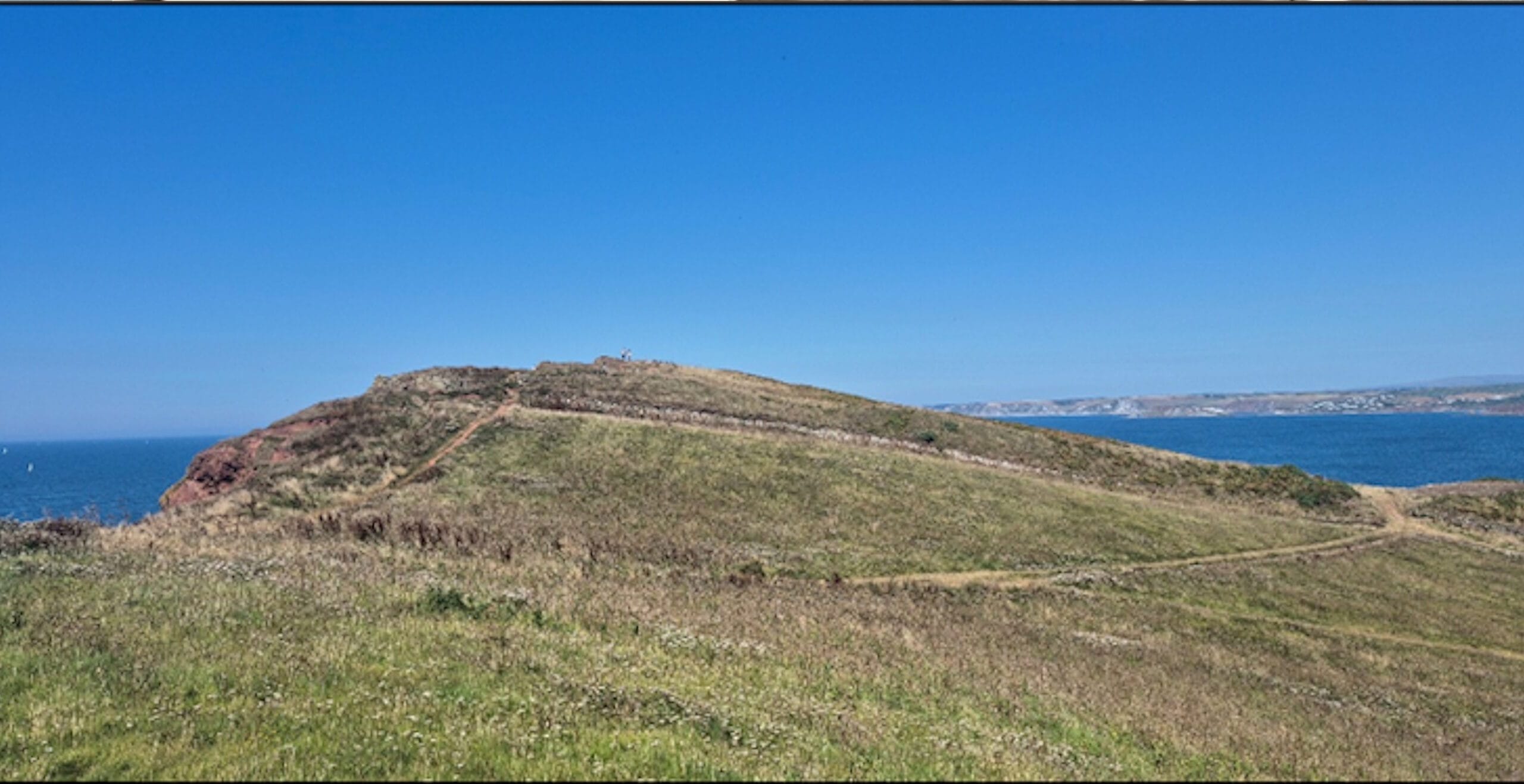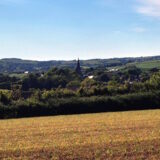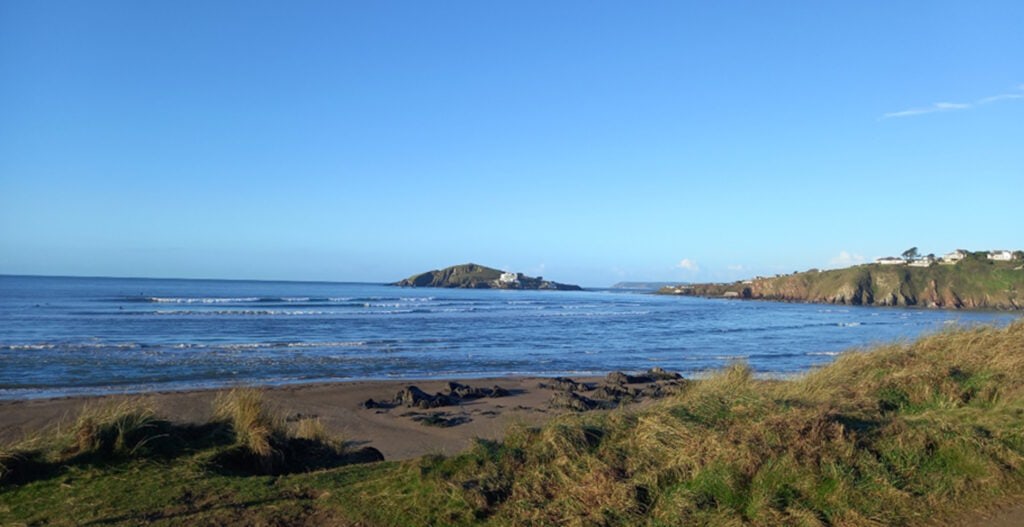Tucked away in a remote corner of the South Hams, a beautiful headland offers sweeping views around majestic Bigbury Bay. This is Bolt Tail, a fantastic viewing point which treats walkers on the South-West Coast Path to a gorgeous panorama. What few appreciate is that this headland is actually an ancient fortress, with millennia of history beneath its soil. For Iron Age people, it wasn’t just a great lookout point, but a sanctuary in times of crisis and perhaps a ceremonial centre.

You can reach Bolt Tail fairly easily on foot, from either the beachy village of Hope Cove or the small hilltop hamlet of Bolberry. Whichever you choose, you will see Bolt Tail stretching out into the ocean, a prominent headland rise commanding the nearby waters. You only need to hike a short distance and hop over a few stiles before going through the entrance to the ancient earthworks. Following the track straight up to the high-point, you will find yourself taking in a gorgeous 360 degree panoramic of the surrounding area. Spin around on a clear day, and your view will embrace far off Dodman Point near Mevagissey in Cornwall; Mount Batten at Plymouth Sound; Burgh Island, Bigbury-on-Sea and Bantham; Thurlestone and Hope Cove; the hills of the South Hams and southern Dartmoor; and the blue waters of the English Channel, often replete with yachts, motorboats and horizon-hugging cruise ships.
Your journey to this point will have been much easier than for an outsider some 2,000 years ago. You may have noticed the mounds of earth around the entrance – these are what remain of extensive ramparts that once controlled access to the headland, splitting the neck of the land. These were built around 500 BCE by the Iron Age peoples inhabiting the area, and were of a type seen throughout South-West Britain, Ireland, Brittany, and other coastal areas of Western Europe. These promontory hillforts worked on the same principle as other Celtic hillforts – taking an existing natural feature and exploiting its position, adding artificial defences. Cornwall’s Tintagel is perhaps the most famous example, and one of the only ones to be developed into a medieval castle centuries later, thanks to its Arthurian associations.
If anything, headlands were easier to adapt for defence than hills. Most are connected to the mainland only by a narrow neck of land, greatly reducing the area where fortifications needed to be constructed. Bolt Tail’s cliffs, like those of most promontories, are inaccessible to all but the most skilled climbers. For relatively little work, they could be made into secure sanctuaries where local people could gather in time of threat. At Bolt Tail, only a bank and ditch, 275 metres long and 4.6 metres high, needed to be constructed across the narrowest point to make a formidable stronghold, perhaps reinforced by a stone wall. The oblique path through the entrance channels visitors straight to the highest point, which perhaps served as a ceremonial centre within the site, as noted by archaeologists Griffith and Wilkes in 2006.
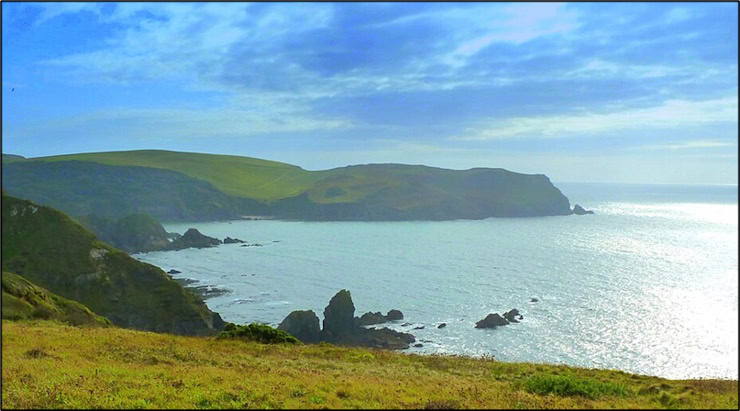
But who exactly built these defences? The Romans called the tribe occupying Devon and Cornwall the ‘Dumnonii’, from whom the name of Devon ultimately derives. The Dumnonii may well have been a conglomeration of several smaller sub-tribes, one or more of whom likely inhabited the South Hams – it is easy to imagine Bolt Tail as the fortress of a local strong-man who led a sub-tribe local to Hope and Salcombe. The awesome views and coastal location may have made Bolt Tail a place for communal events and ceremony as well as defence. Visitors and traders may have been hosted here – it is easy to imagine oath-swearing rituals taking place amidst such a dramatic backdrop.

It may have been significant that Burgh Island can be seen directly across the bay – in the Iron Age, Burgh may have been a similar fortress, utilising the tide as part of its defences. The same goes for more distant Mount Batten. Any group which controlled all three sites would have been able to monopolise trade in Bigbury Bay, which came from as far away as the eastern Mediterranean. If the same people occupied inland hillfort sites – such as Blackdown Rings – then their grip on the entire South Hams region would have been very strong. Indeed, on a clear day the peak of Blackdown Rings is visible from Bolt Tail, as is Hay Tor on Dartmoor. It is possible that an effective system of beacons could have enabled basic communication between lookout points on the coastal promontories and the inland – enabling news of visiting traders, or warnings of invaders, to travel up to 30 miles in a matter of minutes. As such, Bolt Tail may have been one part of a network of prominent sites that formed a defensive ‘spine’ and communications network within the Dumnonii’s lands.
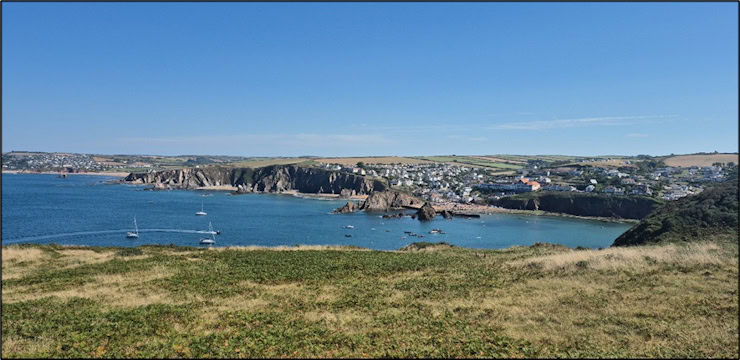
As with most Iron Age fortifications, Bolt Tail was likely abandoned immediately before or during the Roman occupation of Britain (43 – 410 CE), with no evidence that the site was reused. The earthworks were partially preserved as a boundary for field grazing, enabling us to trace them today. However, there have never been extensive excavations undertaken at Bolt Tail – if its history did stretch into the Early Middle Ages, the signs still lie buried beneath the promontory. Go to Bolt Tail today, and like other visitors you can enjoy the sweeping panoramic and splendid coastal walk. But perhaps unlike them, you will be aware of walking in footsteps which date back to the Iron Age, and that you are standing not just on a coastal hill, but an ancient tribal fortress. On a bright day, when the sun sparkles on the sea and the countryside bursts with rustic colour, your knowledge of Bolt Tail’s history will add even more depth to a breathtaking experience.
Mike Edwardson is a history writer with an MA from The University of Sheffield. Passionate about uncovering the lesser-known stories of British history, Mike combines his enthusiasm for exploring with a love for storytelling to bring the past to life.
Published: 15th November 2025
